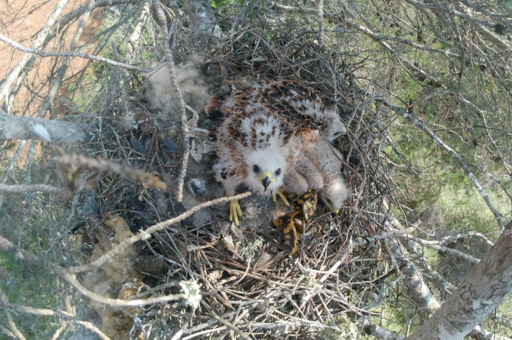Minister Joan Simonet highlights the importance of interregional collaboration and recalls the species’ dramatic recovery in Mallorca
The Ministry of Agriculture, Fisheries and Natural Environment, through the Species Protection Service of the Directorate-General for Natural Environment and Forest Management, has once again coordinated the transfer of 15 red kite chicks (Milvus milvus) from Mallorca to Andalusia. This initiative is part of an ongoing reintroduction and population reinforcement project in the Sierra de Cazorla, Segura y Las Villas Natural Park (Jaén). Since this collaboration began five years ago, the Balearic Islands have contributed nearly 50 red kite chicks to the project.
Minister Joan Simonet emphasised that “the red kite is a protected species classified as endangered,” and stressed the value of collaboration between regional governments. He explained, “In the 1990s, there were only eight breeding pairs of red kites in Mallorca. Thanks to awareness and conservation efforts, there are now more than one hundred on the island, which allows us to actively contribute to the Andalusian reintroduction project.”
TDB keeps you informed. Follow us on: Facebook, Twitter and Instagram
Fifteen Red Kites Transferred from Mallorca to Andalusia to Help Strengthen the Population of This Endangered Species
The safe extraction of chicks was made possible through coordination among multiple entities. Over recent months, Environmental Agents have monitored the red kite breeding population in Mallorca, identifying and tracking nests. The most accessible nests were selected, and the Height Intervention Group (GIA) of the Environmental Agents carried out the extractions at the optimal time. Some chicks remained in Mallorca, while others were selected for transfer to Andalusia.
The Balearic Ornithology and Nature Defence Group (GOB), in collaboration with the Species Protection Service and with funding from the Ministry and ENDESA Baleares, carried out ringing and marking of the 12 chicks that remained on the island. Nine of these were fitted with satellite transmitters, which will enable close monitoring and the detection of risks such as poisoning, illegal shooting, or electrocution.
The Consortium for Wildlife Recovery of the Balearic Islands (COFIB) identified the 15 chicks selected for transfer. These were brought to COFIB’s facilities in Santa Eugènia, where they were monitored before being transported to mainland Spain for release.
The Group for the Rehabilitation of Native Wildlife and its Habitat (GREFA), which leads the reintroduction project for the Andalusian regional government, transported the birds to the mainland and used the hacking technique for their release in the Sierra de Cazorla. This method, also known as “soft release,” involves housing the birds in artificial nests until they acclimate to the environment and are ready for freedom. The birds are tagged with official rings, wing markers, and GPS transmitters.
In 2024, GREFA released 48 red kites in the Sierra de Cazorla from Baleares, Madrid, and Aragón. Notably, for the second year in a row, a male red kite named Mallorca, originally from the Balearic Islands, successfully bred in the region.
